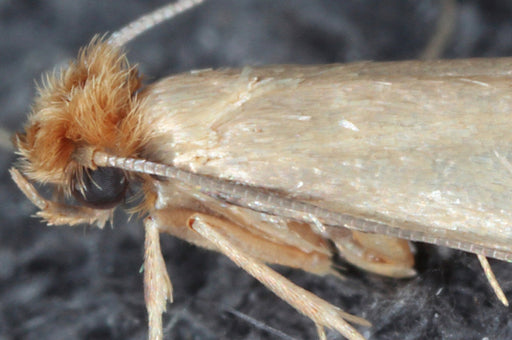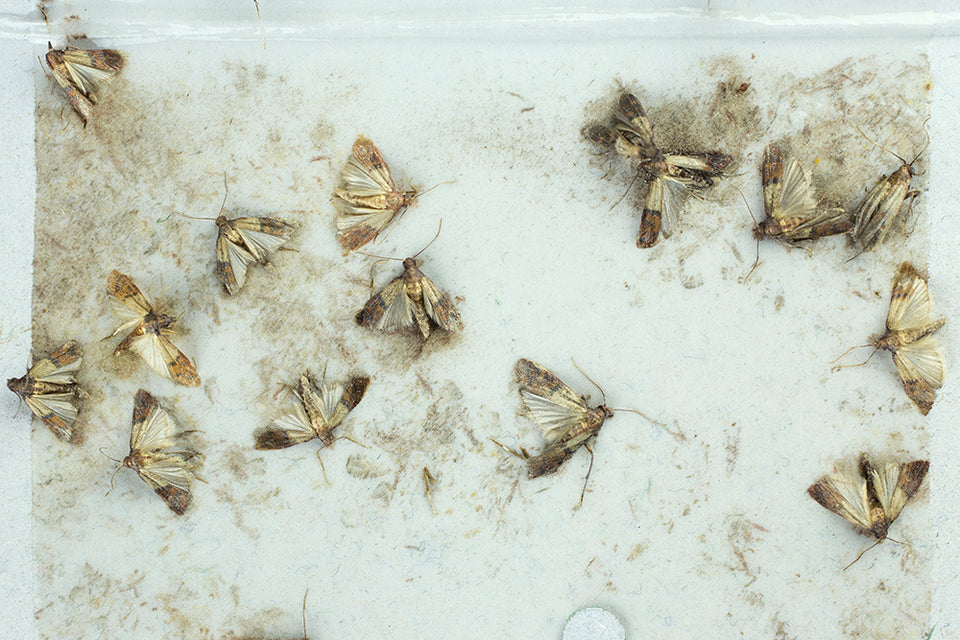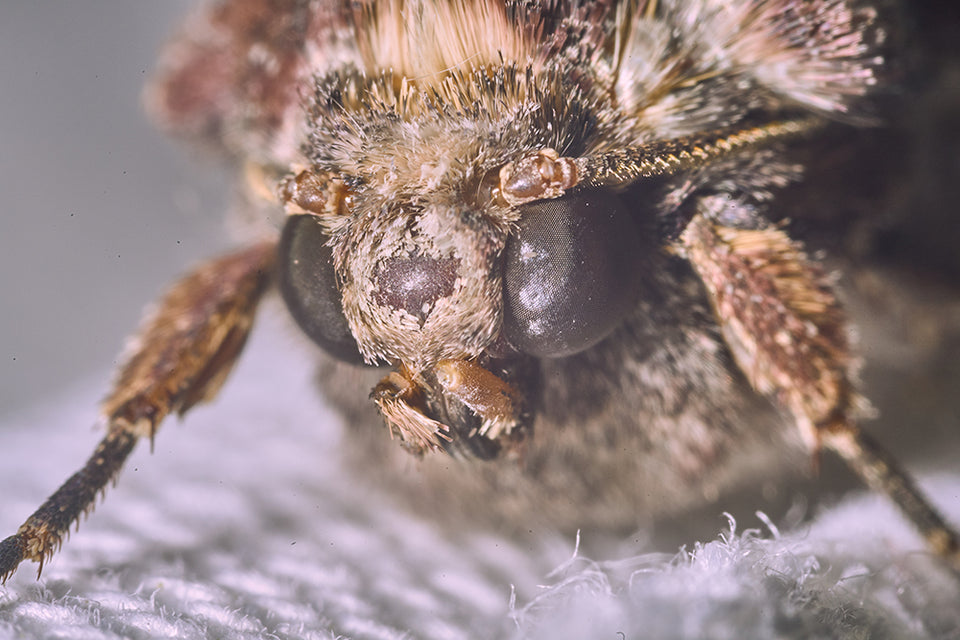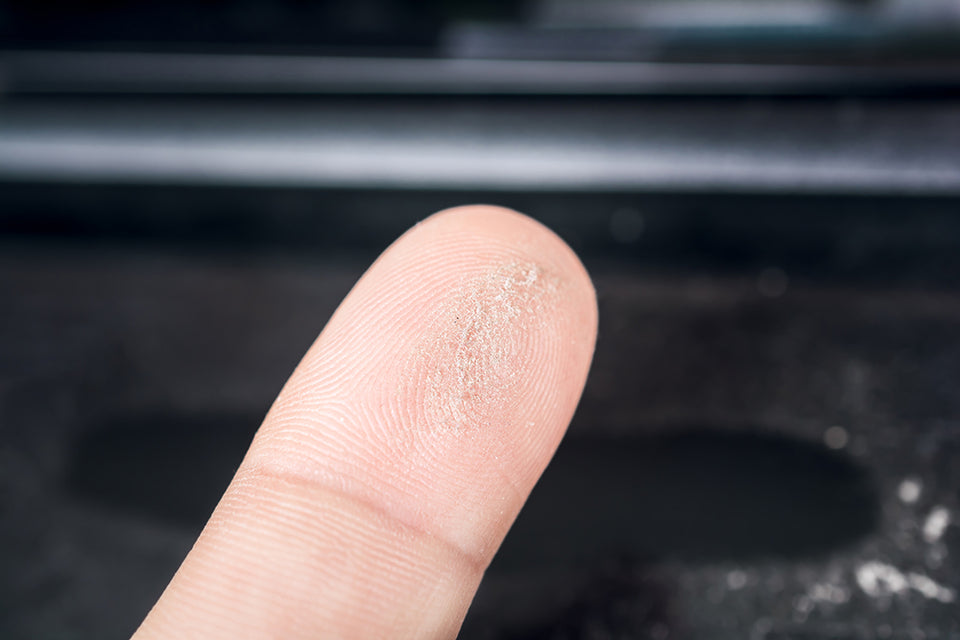Why Are Moths Dusty?

If you have ever seen a moth fluttering against your window or trying to become one with a light bulb, you’re probably familiar with moth dust. Better yet, if you’ve ever caught a moth with your bare hands, we’re sure you noticed how powdery they are.
So what is the strange dust that comes off of moths, anyway? Are moths super dirty, or is there something more to the story? Here, we will explain why moths are dusty and what this mysterious, dust-like powder actually is.
Exactly Why Are Moths So Dusty?
Moths are dusty because their wings are covered in tiny scales. These scales are similar to the scales that you would find on a fish, except they're extremely small and less durable. The tiny scales of a moth can only be recognised as such under a microscope. To the naked eye, they seem like glittery or powdery dust.
Moreover, the scales from a moth’s wings are far less robust than the scales you would find on a fish or reptile. As such, they shed with the lightest touch and even come off occasionally as a moth flutters around. Moth scales are especially likely to shed when a moth is touched, its wings are rubbed, or it roughly bangs into a solid surface like a window, table, or light fixture.
Also, when dead moths begin to dry and decompose, their powder-like scales shed even more and make a dusty little mess. For this reason, if you are cleaning up dead moths, using a vacuum is recommended. Now, let’s go over some quick FAQs about moth dust.

What's the powder on a moth?
The powder on a moth is actually made up of tiny little scales. Butterflies have scales like this as well. They come off easily and appear as shiny dust.
What happens if you touch the wings of a moth?
If you touch a moth’s wings, the delicate scales will shed - especially when rubbed against. The oils on your fingers cause the scales to stick, creating a dusty, slightly translucent film. Moth scales are shed easily to help them escape predators.
A moth will usually still be able to fly, even after losing many of its scales. However, its lifespan may be diminished slightly due to the reduction of its thermoregulation abilities.
Is moth wing dust poisonous?
The dust from the wings of a moth is not poisonous. These tiny scales are relatively harmless. However, they can cause eye and skin irritation. If you have allergies, these powdery scales can cause issues as well.
Do moths bite?

No, moths do not bite. In fact, the vast majority of adult moths do not even have mouths. Adult moths exist primarily to reproduce and die. As such, they are incapable of biting anything, including you. For the most part, moths do not sting either.
However, Clothes and Pantry Moths begin their lives in a larval stage, and they do have mouths! These ravenous little larvae can chew through natural materials like fabric, grain, and more. This is how they tunnel through clothing made of silk, fur, or wool, and so on.
Reasons why Moths are dusty
If you have ever accidentally touched a moth with your hands or grabbed one intentionally to throw it outside, you probably noticed that there was shimmering dust left behind on your fingers. So why are a moth’s wings dusty? This dust is made up of tiny scales and serves multiple functions.
For one thing, moth scales provide body heat regulation. The scales work like feathers, creating pockets of insulation. This helps to keep a moth warm and provides heat for better muscle regulation during flight.
Additionally, moth scales provide camouflage through colours and patterns. The scales create colour by refracting light through their translucent centres or edge ridges.
Why are moths powdery?
Moths are powdery because they are covered in scales. The scales provide camouflage, defense, and an insulating layer. Butterflies have scales like this as well, which are used for thermal regulation. However, moths tend to have thicker scale layers than butterflies as they are usually nocturnal insects. Since moths don't have the ability to warm up in the rays of the sun, they require extra insulation, which is provided by their powdery scales.
Why are moths dusty when you kill them?

When you kill a moth, force and abrasion often occur. This abrasive force causes the dusty scales of a moth's wings to shed and make a mess. Many people prefer to use Moth Traps or deterrents to avoid this mess.
Do moths have fur?
Moths look very fuzzy up close. In fact, many would think of this fuzz as fur. Moths are in the order Lepidoptera, which comes from a Greek word meaning Lepis, or scales. The furry fuzz on the body of a moth helps with protection and heat regulation. The fur offers defense by disrupting the sonar of nocturnal predator bats.
The Mystery of Moth Dust: Final Thoughts
So why do moths have dust? Because they have many tiny scales that serve various functions, including defense and thermoregulation. Is moth dust poisonous? Nope, just annoying, especially if you have allergies. To avoid a powder moth mess, it is best to use moth traps or deterrents. If you find dead moths that have left dusty disarray behind, vacuuming them up is a good option.

FAQs for Why Are Moths Dusty?
Having moths in your house can be frustrating and messy. This is especially true if your home has been invaded by pests like Clothes Moths or Pantry Moths. Some moth varieties of moth larvae chew holes in clothes, while others eat through the food in your pantry. However, one thing that essentially all moth species have in common is a dusty substance that seems to come from their wings. To help you better understand why moths are so dusty, here are some frequently asked questions on the subject. Hopefully, you can find the simple answers to your moth-dust related questions below in this FAQ section!
Why are moths so dusty?
Moths are dusty because they are covered in minuscule scales. However, these scales are different from the kind you would find on a reptile such as a lizard or a snake. Instead, they are tiny, translucent scales only identifiable under a microscope. These little scales can easily become dislodged when exposed to friction. As the scales shed, they appear as a cloud or thin layer of fine powdery dust.
For this reason, moths can be messy to clean up when they die. When a moth dries out and decomposes, even more scales can fall off to form a dusty coating nearby. Using a vacuum to clean up dead moths is one effective way to remove their "dust" easily. A wet cloth or paper towel can also be used to wipe up the dusty scales moths leave behind on windowsills, floorboards, and other indoor surfaces.
Why are moths dusty when you kill them?
Usually, when you kill a moth, some amount of friction and force will be involved. For example, if you swat a moth with a rolled-up newspaper, it will likely get smashed. This causes the tiny scales on the moth's wings to fall off and make a mess. These scales are very tiny and look like powder or dust. Moreover, as moths decompose, they tend to shed even more scales, making a dusty and rather gross mess. Dead moths can be cleaned up with a vacuum or a damp cloth.
What is the powdery stuff on moths?
The soft powdery substance found on moths is often mistaken as dust. However, this silty, dusty, powder-like material is actually made up of tiny scales. The scales on a moth's wings serve many purposes. These scales can provide defense through camouflage and thermoregulation via insulation and heat retention. Moth scales have aerodynamic applications, too. When a moth's scales are rubbed off, it will often have a more difficult time flying.
Why are moths so fuzzy?
If you have ever examined a moth up close, you may have noticed that these little insects seem to be covered in fur. The fuzzy fur of moths helps to protect and keep them warm. Like mammals, this fuzzy material serves to regulate body heat. Moth fuzz may also offer a defense mechanism by disrupting the sonar of nocturnal predators. For instance, bats use sonar for hunting at night and readily prey on moths. However, the fuzz on a moth actually disrupts this sonar, meaning it can flutter around at night a little bit more safely.
Is moth dust safe?
Moth dust is not harmful to humans or animals. Although this dusty powder may not be very appealing, it is not dangerous. The only time that moths are harmful is when they are Clothes Moth or Pantry Moths and once in the home they will cause real damage to fabric materials and stored food items. Bearing that in mind, a few uncommon species of moths do produce toxins when eaten as a defense mechanism against predators. Still, in most instances, moths (and their dust) are not dangerous to pets, kids, or adults. Only things like the flour in your pantry and the fur coats in your attic are in danger of moth damage.
What happens when moths get wet?
Moths don't do well in water. When they get wet, the fuzz on their bodies and the tiny translucent scales that cover their wings can become saturated with liquid. This weighs a moth down and causes it to become stuck to any nearby surface. In fact, one way to catch moths is to fill a bowl with soapy water and place it under a light source where moths commonly flutter about at night. Since moths are essentially absorptive, they often seek shelter in inclement weather. This can cause moths to enter your home if it is rainy, snowy, or damp outside.
Can a moth fly if the dust of its wings gets rubbed off?
Although the scales on a moth's wings provide aerodynamic contributions, they aren't entirely essential to flight. So, if a moth's wings are rubbed, the moth can still usually fly around. However, if a moth's wings get torn or tattered severely, its flight may become difficult or impossible. The more tattered a moth's wings are, the harder it will be to maneuver through the air.
About MothPrevention
MothPrevention® speak to customers every day about their clothes moth issues - clothes moths are a species that are ever increasing and that can cause significant damage to clothes, carpets and other home textiles.
To date, we’ve helped over 250,000 customers deal with their moth problems. We have developed professional grade solutions including proprietary pheromones and trap design engineered to the highest production standards.





